Optional Modifications
Removable Roosting Bar
The roosting bar is just a 2x4 installed wide side up. I cut the hangers out of scrap wood with the jigsaw and screwed them to the wall. Simple but effective.

My Muscovy ducks settling down in the duck house for the night
Winter Ventilation
Living in the northeastern United States I wanted to be able to close the two large gable vents on those freezing and blustery winter nights. Good thing I kept the pieces I cut out! All I had to do was attach them with a hinge on each and now I can close the vents up! No latches were needed as it is a great press fit.


Vent cover for those blustery winter nights
To allow for ventilation on the nights when I close the large vents, I drilled large holes in the front soffit and covered them with hardware cloth.

24/7 ventilation under the eaves
Nesting Box
I added a nesting box to my duck house not only to provide a comfy place for my ducks to lay eggs in but also for the extra space - the nesting box is useful in the winter as a food and water area when it's too cold for my ducks to wander outside.

The dog house duck house with the new nesting box addition
The nesting box is 33" x 15" on the inside and is made mostly of materials I already had on hand. The walls are pressure-treated plywood over a scrap wood frame trimmed out with pieces of the cedar siding I took out and pallet wood. The corrugated roof is a cutoff from another project and the flashing is a piece of a heavy duty rubber mat. There are two hinges underneath the flashing and roof panel and the latch is a swivel hasp latch.


The outside of the nesting box
I brought power to the duck house via an extension cord and ran it into the nesting box. Now I have a place to plug in the infrared heater and heated water bowl. The floor is covered with a piece of vinyl sheet flooring and I've also used a boot tray to catch spills.


What the inside of the duck house looks like now with a nesting box (and heater)
The roosting bar is just a 2x4 installed wide side up. I cut the hangers out of scrap wood with the jigsaw and screwed them to the wall. Simple but effective.
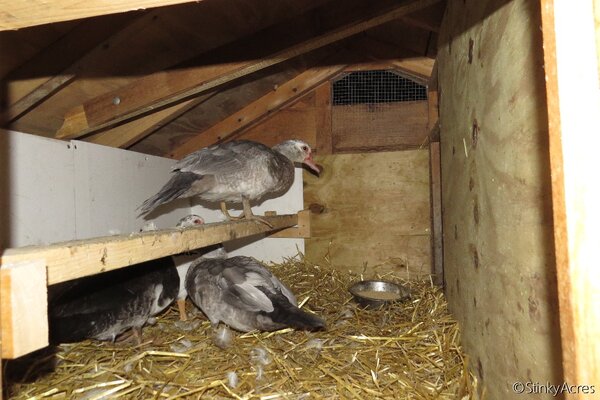
My Muscovy ducks settling down in the duck house for the night
Winter Ventilation
Living in the northeastern United States I wanted to be able to close the two large gable vents on those freezing and blustery winter nights. Good thing I kept the pieces I cut out! All I had to do was attach them with a hinge on each and now I can close the vents up! No latches were needed as it is a great press fit.
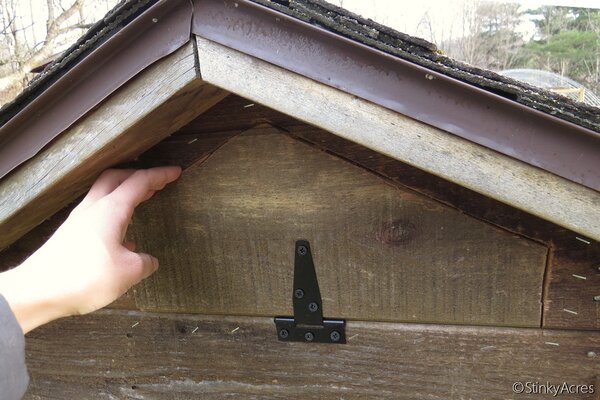
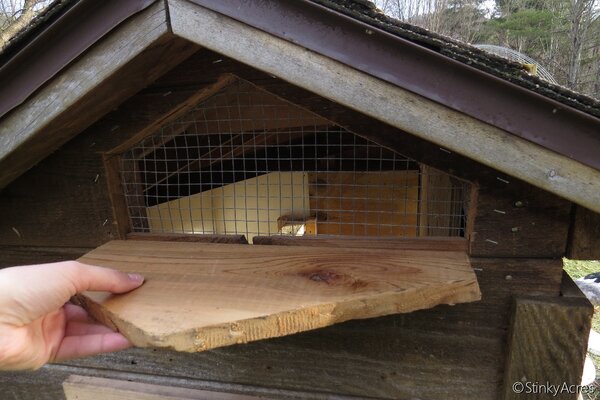
Vent cover for those blustery winter nights
To allow for ventilation on the nights when I close the large vents, I drilled large holes in the front soffit and covered them with hardware cloth.
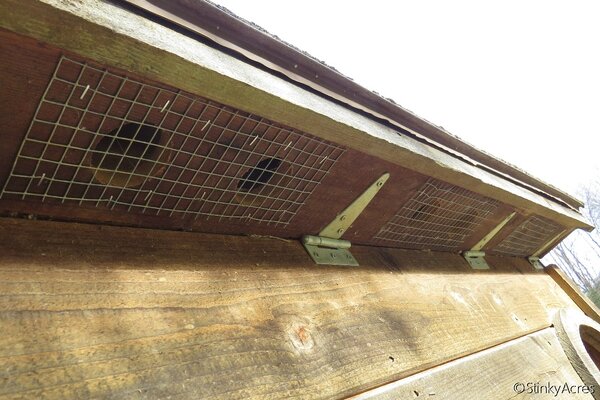
24/7 ventilation under the eaves
Nesting Box
I added a nesting box to my duck house not only to provide a comfy place for my ducks to lay eggs in but also for the extra space - the nesting box is useful in the winter as a food and water area when it's too cold for my ducks to wander outside.
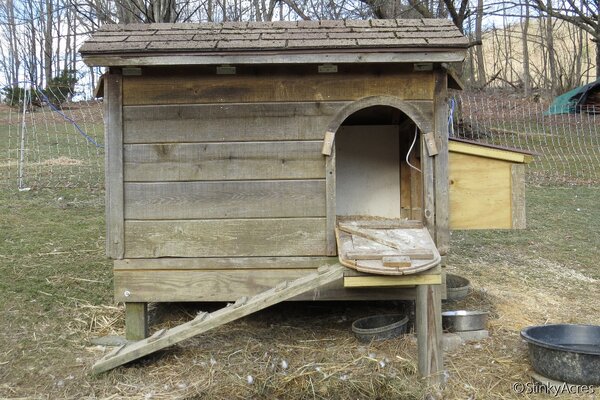
The dog house duck house with the new nesting box addition
The nesting box is 33" x 15" on the inside and is made mostly of materials I already had on hand. The walls are pressure-treated plywood over a scrap wood frame trimmed out with pieces of the cedar siding I took out and pallet wood. The corrugated roof is a cutoff from another project and the flashing is a piece of a heavy duty rubber mat. There are two hinges underneath the flashing and roof panel and the latch is a swivel hasp latch.
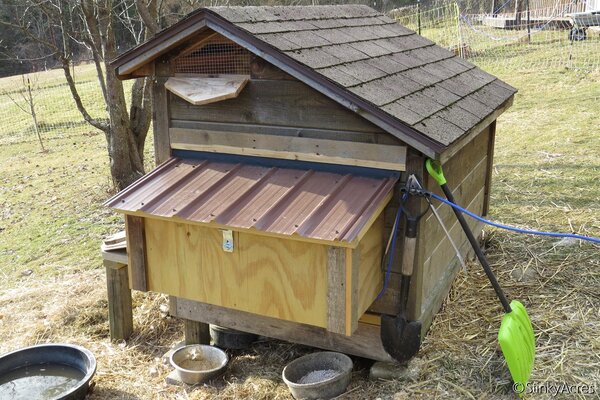
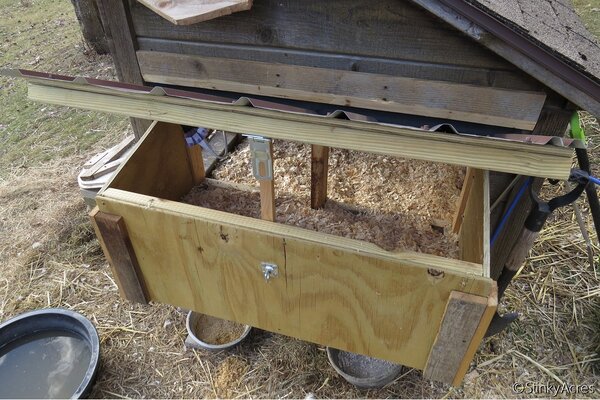
The outside of the nesting box
I brought power to the duck house via an extension cord and ran it into the nesting box. Now I have a place to plug in the infrared heater and heated water bowl. The floor is covered with a piece of vinyl sheet flooring and I've also used a boot tray to catch spills.
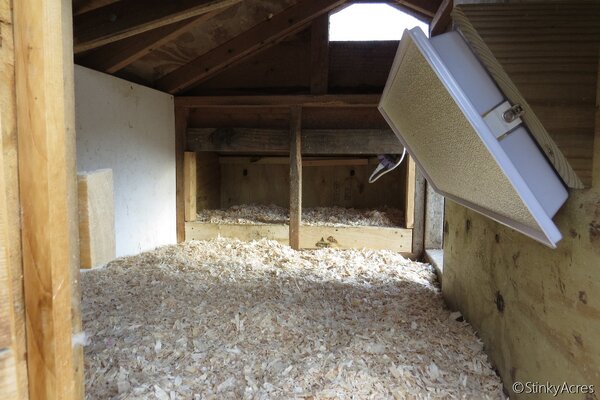
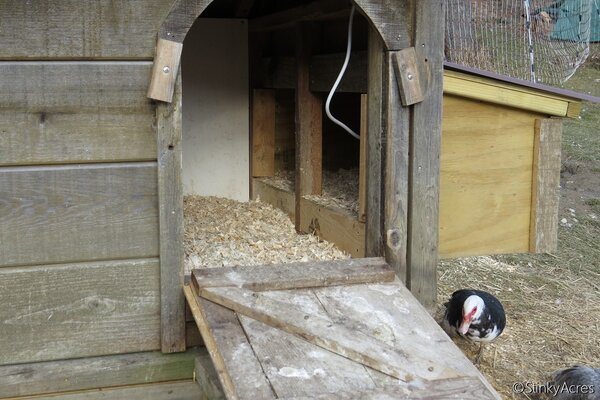
What the inside of the duck house looks like now with a nesting box (and heater)
